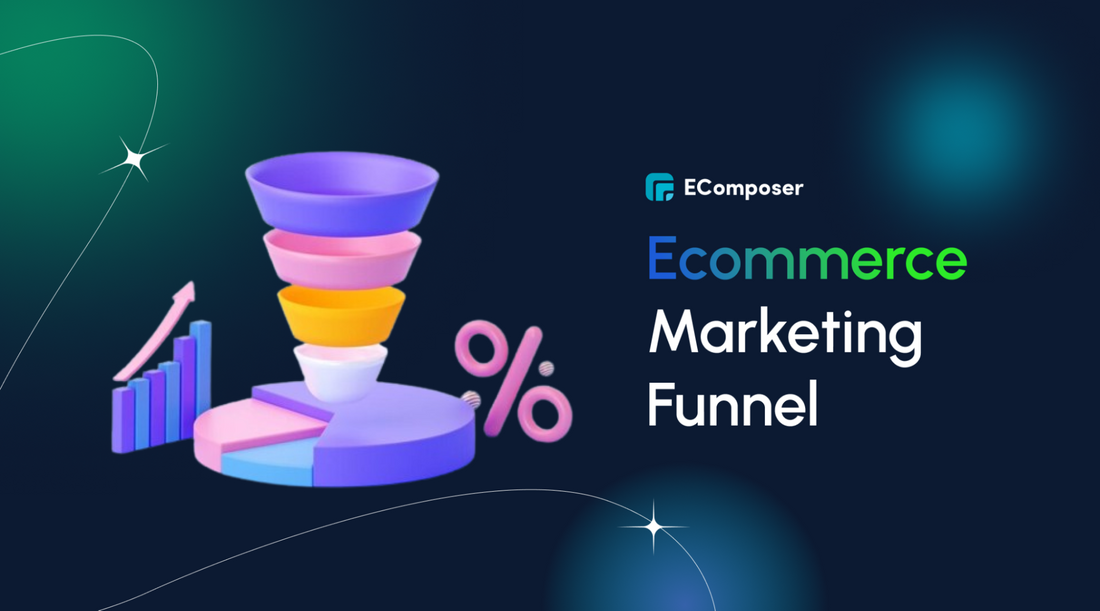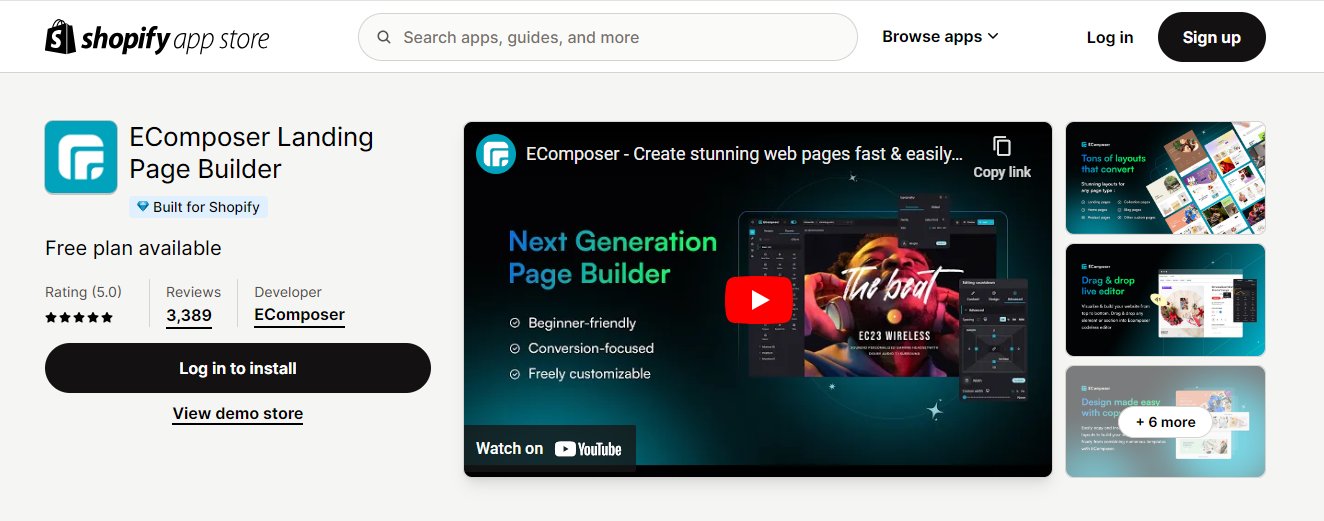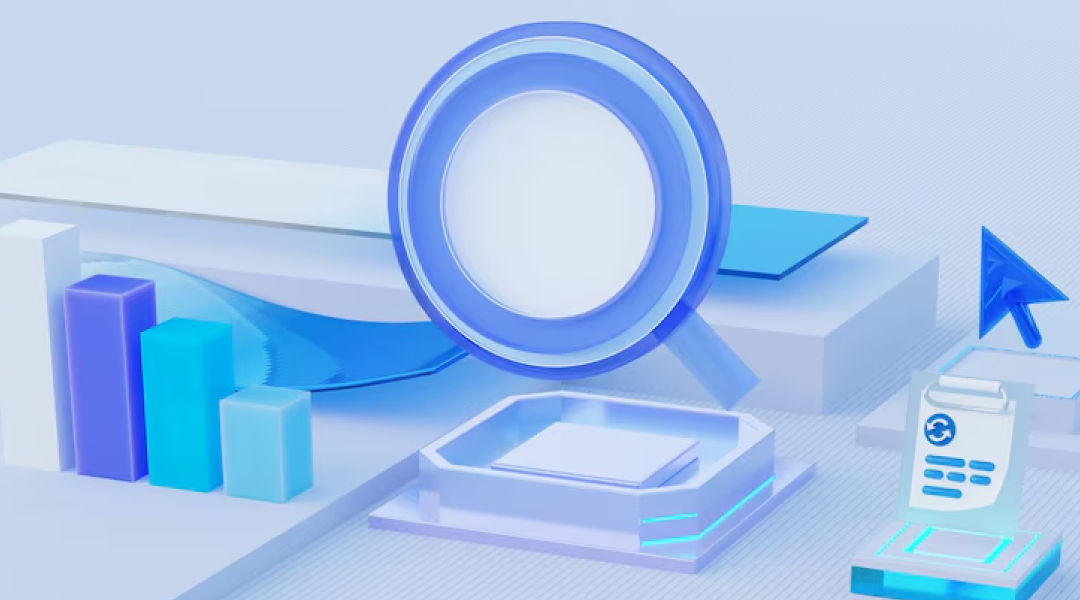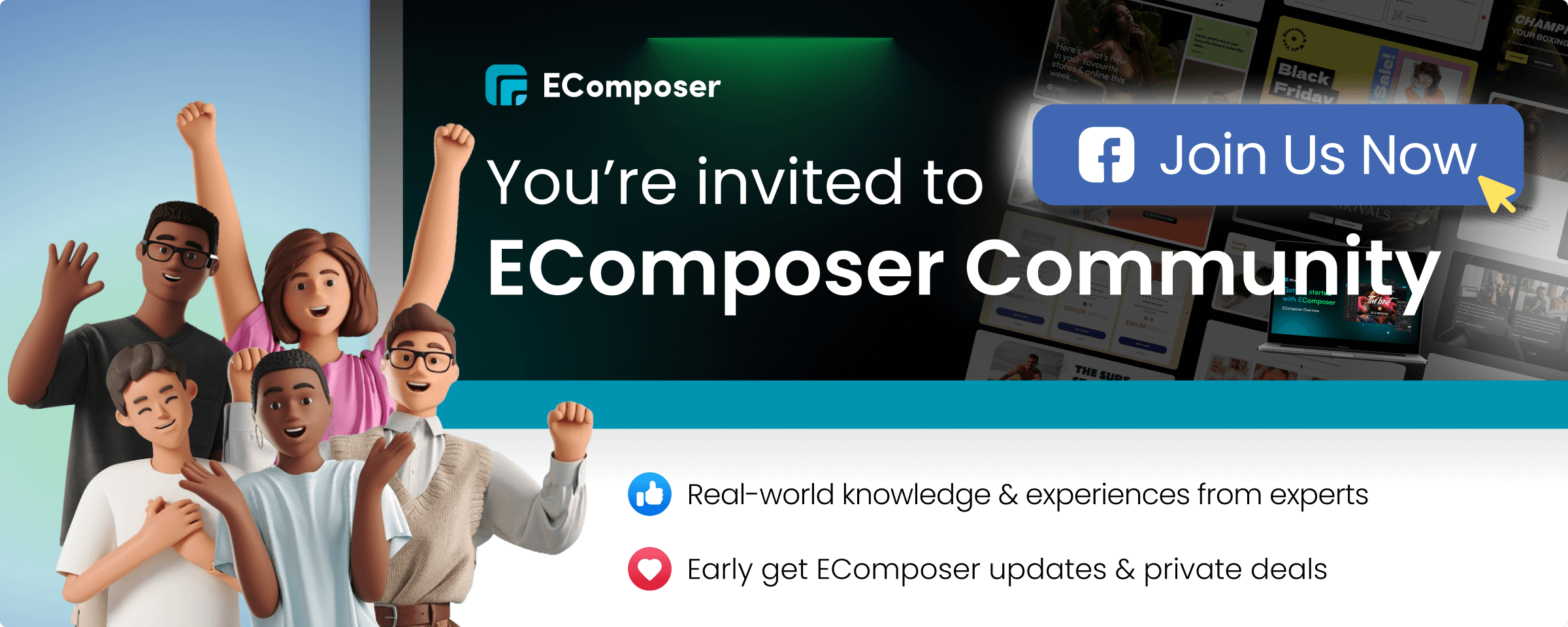Unlock The Power of eCommerce Marketing Funnel To Get Sales

Table Of Contents
In the ever-evolving landscape of online commerce, understanding and harnessing the power of marketing funnels is key to driving conversions and achieving sustainable growth. Join us as we delve into the intricacies of eCommerce marketing funnels, uncovering actionable strategies, expert insights, and real-world examples to help you navigate the path to success. Get ready to supercharge your sales and revolutionize your eCommerce game!
What is an ecommerce marketing funnel?

Understand eCommerce marketing funnel
An eCommerce marketing funnel is a strategic framework designed to lead prospective clients through different phases of the purchasing process, ultimately leading to conversions and sales. Similar to traditional marketing funnels, eCommerce funnels are structured sequences of steps that map out the customer journey from awareness to conversion.
These stages typically include awareness, interest, consideration, conversion, retention, and advocacy. By understanding and optimizing each funnel stage, eCommerce businesses have the potential to allure, engage, and convert potential customers into loyal ones, driving sustainable growth and success.
How does it work?
The eCommerce marketing funnel is a systematic approach to guide potential customers through various stages of the purchasing process, each aimed at moving them closer to making a purchase, from initial awareness to final conversion. It begins by creating brand or product awareness, sparking interest, fostering consideration, facilitating conversion, encouraging retention, and ultimately driving advocacy.
At each stage, businesses employ targeted strategies and tactics to engage and influence potential customers, aiming to increase revenue and cultivate enduring customer relationships. Through comprehension and refinement of every phase of the funnel, enterprises can proficiently traverse the digital terrain and accomplish their promotional goals.
Importance of an ecommerce marketing funnel

Guide the Customer Journey
The eCommerce marketing funnel offers a systematic approach to lead potential customers through every step of the purchasing journey, starting from awareness and extending beyond the purchase. By grasping the customer's progression and tactically reaching out to them at each phase, businesses can enhance their chances of converting leads into sales.
Maximize Conversions
By optimizing each stage of the funnel, businesses can maximize conversions and sales. The eCommerce marketing funnel helps companies identify opportunities to improve their marketing strategies and drive more sales, from attracting potential customers to retaining loyal ones.
Improve Customer Experience
A well-designed eCommerce marketing funnel enhances the customer experience by providing relevant information, personalized recommendations, and seamless interactions at every touchpoint. This helps build customer trust and loyalty, leading to repeat purchases and positive word-of-mouth referrals.
Measure and Analyze Performance
The eCommerce marketing funnel enables businesses to monitor essential metrics and evaluate the impact of their marketing endeavors at every stage. By assessing metrics like conversion rates, customer acquisition costs, and customer lifetime value, businesses can pinpoint areas needing enhancement and allocate resources more efficiently.
Increase ROI
By fine-tuning the eCommerce marketing funnel, businesses can enhance the return on investment (ROI) for their marketing endeavors. By prioritizing the attraction of high-quality leads, nurturing them through the funnel, and ultimately converting them into paying customers, businesses can optimize their revenue and profitability.
Adapt to Customer Behavior
The eCommerce marketing funnel enables businesses to adapt to changing customer behavior and preferences. By continuously monitoring customer interactions and feedback, businesses can refine their marketing strategies more effectively to align with the needs and expectations of their target audience.
Businesses leveraging the eCommerce marketing funnel are better positioned to succeed and thrive in the digital age.
6 Stages of an ecommerce marketing funnel

- Stage 1 - Awareness: At the top of the funnel, businesses use various marketing channels to attract the attention of potential customers and make them aware of their brand and products. This can include content marketing, social media advertising, SEO, influencer partnerships, and more.
- Stage 2 - Interest: Once potential customers become aware of the brand, they aim to capture their interest and keep them engaged. This is done by providing valuable content, showcasing product features, offering promotions or discounts, and engaging with them on social media or email marketing.
- Stage 3 - Consideration: In this stage, potential customers evaluate their options and consider whether to make a purchase. Businesses provide detailed product information, customer reviews, comparisons with competitors, and personalized recommendations to help sway their decision to favor their products.
- Stage 4 - Conversion: The conversion stage is where potential customers complete the desired action, such as making a purchase. Businesses optimize the checkout process, offer secure payment options, and provide incentives to encourage customers to complete their purchases.
- Stage 5 - Retention: After a purchase is made, it's essential to retain customers and encourage repeat purchases. Businesses accomplish this by delivering exceptional customer service, offering loyalty programs, sending post-purchase follow-up emails, and providing ongoing value and support.
- Stage 6 - Advocacy: Satisfied customers can become advocates for the brand, helping to attract new customers through word-of-mouth referrals and positive reviews. Businesses encourage and incentivize customers to share their experiences with others, thus amplifying their brand's reach and credibility.
By understanding and optimizing each stage, businesses can effectively nurture leads, drive conversions, and build long-term customer relationships.
How to Build Your Ecommerce Marketing Funnel
Step 1: Define Your Ideal Customer

Clearly defining your ideal customer is crucial before you start building your eCommerce marketing funnel. Understanding their demographics, interests, pain points, and buying behaviors enables you to customize your marketing strategies to effectively reach and engage them, leading to higher conversion rates and increased customer loyalty.
- Gather insights about your target audience by conducting surveys, interviews, and market research.
- Create detailed buyer personas representing different segments of your ideal customer base, including demographics, preferences, pain points, and buying behaviors.
Step 2: Map the Stages of Your Funnel
Map out the stages of your eCommerce marketing funnel, from awareness to advocacy. Identify the specific actions or milestones potential customers must take at each stage to progress through the funnel. This will provide a clear roadmap for guiding prospects towards making a purchase. You can also understand the customer journey and ensure you have strategies to address each stage effectively, maximizing the chances of conversion.
- Create a visual representation of your eCommerce marketing funnel, outlining each stage and the corresponding actions or touchpoints.
- Use flowcharts or diagrams to map out the customer journey from awareness to advocacy, ensuring a clear understanding of the funnel's structure.
Awareness
- Introduce potential customers to your brand or product.
- Increase visibility through advertising, social media, and content marketing.
- Goal: Generate interest and capture attention.
Interest
- Engage potential customers with valuable content and compelling messaging.
- Showcase product features and benefits to pique curiosity.
- Goal: Foster engagement and encourage further exploration.
Consideration
- Provide detailed information about your products or services.
- Address potential customer questions and concerns.
- Goal: Help potential customers evaluate their options and make informed decisions.
Conversion
- Prompt potential customers to take action and make a purchase.
- Offer incentives such as discounts or limited-time offers.
- Goal: Drive sales and turn leads into customers.
Retention
- Focus on retaining existing customers and encouraging repeat purchases.
- Provide excellent customer service and personalized experiences.
- Goal: Build loyalty and maximize customer lifetime value.
Advocacy
- Turn satisfied customers into brand advocates who promote your products or services.
- Encourage customers to share their experiences and refer others.
- Goal: Amplify brand reach and credibility through word-of-mouth marketing.
Step 3: Craft Compelling Content for Each Stage
Create compelling content tailored to each stage of your eCommerce marketing funnel. From informative blog posts and engaging social media content to product videos and customer testimonials, ensure that your content is relevant, valuable, and targeted to the needs and interests of your audience at each stage. It helps build trust, establish credibility, and differentiate your brand from competitors.
Tailor your content to address your audience's specific needs and interests at each funnel stage.
Awareness
- Create attention-grabbing content that introduces your brand or product to a broader audience.
- Use educational blog posts, social media ads, and infographics to spark interest and generate curiosity.
- Focus on providing valuable information that addresses common pain points or interests within your target market.
Interest
- Engage potential customers with content showcasing your product or service's unique features and benefits.
- Use visually appealing images, videos, or interactive content to capture attention and encourage further exploration.
- Share customer testimonials or success stories to build credibility and trust with your audience.
Consideration
- Provide detailed information and resources that help potential customers evaluate their options and make informed decisions.
- Create product comparison guides, case studies, or in-depth reviews highlighting the key differences between your offerings and your competitors.
- Address common objections or concerns that potential customers may have and offer solutions or reassurances.
Conversion
- Create urgency and incentivize potential customers to take action with compelling calls-to-action (CTAs) and limited-time offers.
- Use persuasive product descriptions, testimonials, and social proof to reinforce the value proposition and encourage purchase decisions.
- Simplify the payment procedure and provide a variety of payment methods to remove barriers to conversion and streamline the purchasing experience.
Retention
- Stay top-of-mind with existing customers by providing valuable content, updates, and exclusive offers.
- Use email newsletters, loyalty programs, and personalized recommendations to promote recurring purchases and strengthen customer engagement.
- Share helpful tips, guides, or user-generated content that adds value and reinforces the benefits of your products or services.
Advocacy
- Assist happy clients in telling others about their encounters and advice.
- Offer incentives or rewards for referrals and provide easy-to-share content or social media assets.
- Showcase user-generated content, testimonials, and success stories to amplify word-of-mouth marketing and build brand advocacy.
Step 4: Design a User-Friendly Website

(image source: EComposer’s Template)
A user-friendly website is essential for providing customers with a seamless and enjoyable shopping experience. It builds trust, encourages engagement, and increases the likelihood of conversion.
Utilize user-friendly platforms like Shopify and EComposer to design and optimize your eCommerce website. Shopify is one of the best eCommerce platforms, enabling merchants to easily create and manage an online store. It offers powerful tools and templates to simplify the process, allowing you to focus on delivering an engaging and conversion-driven website for your customers.
EComposer is the #1 Drag & Drop Shopify Page Builder; you can build a stunning online store fast and easily with the powerful tools of EComposer: a rich library of pre-made layouts and section templates. Besides, it provides excellent features to help you optimize your store for the best performance and high conversion. This app also integrates with top Shopify Apps in various niches, from SEO, Email Marketing, Affiliate & Referral, Order Tracking, etc… to bring the all-in-one solution for merchants. You can start using Shopify with $0. Try EComposer Free Now!

- Choose professionally designed templates that are visually appealing and optimized for mobile devices.
- Implement intuitive navigation, clear calls-to-action, and a streamlined checkout process to enhance the user experience.
Read more:
How to Design a Shopify Store in 10 minutes [2024 Guide]
Step 5: Leverage Email Marketing
By using email marketing, you can maintain your audience's attention, nurture relationships, and drive repeat purchases. It's a cost-effective way to engage with customers, cultivate brand loyalty and boost sales for your online store.
- Sort your email list according to engagement levels, surfing habits, and past purchases.
- Customize email campaigns to send offers and material that is pertinent to your audience.
- Use automation tools to send targeted emails at key points in the customer journey, such as welcome sequences, abandoned cart reminders, and post-purchase follow-ups.
Step 6: Track and Analyze Your Results
Tracking and analyzing your results provide valuable insights into the effectiveness of your marketing efforts. It helps you to deploy resources more effectively, optimize your strategies, and make data-driven decisions, ultimately driving better results for your eCommerce business.
- Track and evaluate the performance of your eCommerce marketing funnel using analytics tools.
- Configure monitoring and analytical software such as Google Analytics, Shopify Analytics, or email marketing platforms' built-in tracking features.
- Monitor critical metrics like website traffic, conversion rates, email open rates, click-through rates, customer acquisition costs, and revenue generated.
- Analyze the data regularly to identify trends, patterns, and areas for improvement.
- Use these insights to identify strengths, weaknesses, and areas for improvement.
Step 7: Continuously Optimize Your Funnel
Continuous optimization ensures that your eCommerce marketing funnel remains relevant, effective, and aligned with your audience's evolving needs and preferences. It allows you to stay ahead of the competition, drive sustainable growth, and maximize ROI for your business. It is based on the insights gathered from tracking and analysis.
- Test different strategies, tactics, and messaging to see what appeals to your audience the most. Iterate and refine your funnel to improve performance and achieve your marketing objectives.
- To experiment with different elements of your eCommerce marketing funnel, do A/B testing, such as ad copy, email subject lines, or website design.
- Use the data from these tests to make data-driven decisions and optimize your strategies accordingly.
- In order to gradually increase the efficacy of your funnel, keep an eye on performance and make improvements as needed.
With the comprehensive guide above, you can successfully create and enhance your eCommerce marketing funnel to draw in, interact with, and convert prospective clients - generating revenue and ensuring the long-term viability of your company.
Optimizing Each Stage for Maximum Conversion

Stage 1 - Awareness
- Content Marketing: Write exciting and educational blog posts, infographics, or videos that address topics relevant to your target audience.
- Search Engine Optimization (SEO): Optimize your website content with relevant keywords to improve organic search ranking and increase website traffic.
- Social Media Marketing: Use social media channels to promote your content, interact with prospective clients, and increase brand awareness.
- Partner with influencers in your industry to increase your visibility and credibility.
Optimization Tips
- Offer valuable gated content (e.g., eBooks, guides) in exchange for email sign-ups to build your email list.
- Targeted Content: Tailor your content to address your ideal customer's specific needs and interests.
- High-Quality Visuals: Make your information visually appealing and attention-grabbing by utilizing captivating photos and videos.
- Clear Calls to Action (CTAs): Encourage visitors to take the next step, whether subscribing to your email list, downloading an ebook, or visiting a specific product page.
Stage 2 - Interest
- Create engaging video content showcasing your products in action or highlighting customer testimonials.
- Use retargeting ads to re-engage potential customers who have shown interest but have yet to make a purchase.
- Implement exit-intent pop-ups offering exclusive discounts or freebies to capture leads before they leave your site.
- Targeted Ads: Utilize social media advertising or pay-per-click (PPC) advertisements to connect with potential customers interested in similar products.
Optimization Tips
- Focus on Value: Highlight how your products can solve the specific pain points of your ideal customer.
- Social Proof: Showcase positive customer testimonials, case studies, and user-generated content to establish reputation and trust.
- Personalization: Tailor your content and ad messaging based on user behavior and interests.
Stage 3 - Consideration
- Provide detailed product descriptions, including specifications, features, and benefits, to help potential customers make informed decisions.
- Display user-generated material, such as comments and reviews from clients' testimonials, to build trust and credibility.
- Product Comparisons: Offer detailed comparisons of your products against competitors, highlighting your unique selling points.
- Free Trials/Demos: Allow potential customers to try your product before they buy, reducing risk and increasing confidence in their purchase decision.
Optimization Tips
- Address Concerns: Provide resources and information that directly address customers' potential hesitations or questions.
- Offer Incentives: Consider limited-time discounts or free shipping to incentivize purchases.
- Live Chat Support: Add a live chat option to your website to address real-time customer inquiries and provide personalized guidance.
Stage 4 - Conversion
- Make your website mobile-friendly to ensure a seamless shopping experience on all devices.
- Implement a guest checkout option to streamline purchasing and reduce friction for first-time customers.
- Limited-Time Offers: Use time-limited deals or flash sales with countdown timers to instill a sense of urgency.
- Personalized Recommendations: Recommend complementary products based on a customer's browsing history or previous purchases.
Optimization Tips
- Simplify the Checkout Process: Make the checkout process fast, easy, and secure. Offer guest checkout options and multiple payment methods.
- Highlight Trust Signals: Display trust signals like security badges, customer testimonials, and clear return policies to instill confidence and alleviate concerns.
- Offer Multiple Contact Options: Provide various ways for customers to reach customer support, such as a phone number, email address, or live chat.
Stage 5 - Retention
- Deliver outstanding customer support and service to resolve problems quickly and transform bad experiences into good ones.
- Email Marketing: Send personalized emails with exclusive offers, product updates, or loyalty program rewards.
- Retargeting Ads: Remind past customers about your brand with targeted ads showcasing complementary products or seasonal offers.
- Exceptional Customer Service: To foster trust and good brand experiences, offer courteous, timely customer service.
Optimization Tips
- Offer exclusive discounts, promotions, or loyalty rewards to encourage repeat purchases and foster customer loyalty.
- Divide your email list into categories according to previous purchases and preferences to deliver personalized and relevant email campaigns.
- Gather customer feedback through surveys or reviews to identify areas for improvement.
- Offer a hassle-free return policy to reduce purchase barriers.
Stage 6 - Advocacy
- Launch a referral program rewarding or providing incentives to consumers who recommend friends and family to your business.
- Urge satisfied customers to post about their experiences on social media and tag your brand for increased visibility.
- Showcase user-generated content and customer testimonials on your website and marketing materials to build social proof and credibility.
- Customer Success Stories: Showcase positive customer experiences and testimonials on your website and marketing materials.
Optimization Tips
- Make it easy for customers to share their positive experiences on social media.
- Acknowledge and thank loyal customers who actively advance your business.
- Run contests or giveaways that encourage user-generated content featuring your products.
By implementing these practical tips and proven strategies at each stage of your eCommerce marketing funnel, you can effectively attract, engage, and convert potential customers while fostering long-term loyalty and advocacy for your brand.
How to Measure and Analyze Funnel Performance

Measuring and analyzing funnel performance is crucial for understanding how effectively marketing efforts drive conversions and identifying areas for improvement.
Set Clear Goals
Define quantifiable, precise objectives for every phase of your funnel., such as increasing website traffic, improving conversion rates, or boosting customer retention.
Identify Key Metrics
Choose the key performance indicators (KPIs) that best reflect your objectives and show progress at every funnel level. Website traffic, bounce rate, conversion rate, average order value, and customer lifetime value are a few examples of these KPIs.
Implement Tracking
Set up tracking mechanisms using tools like Google Analytics, CRM systems, or marketing automation platforms to monitor user interactions and conversions throughout the funnel. Ensure tracking codes are correctly installed on your website and integrated with your marketing channels.
Visualize the Funnel
Create visual representations of your eCommerce marketing funnel using dashboards or reporting tools. Visualize each stage's traffic flow and conversions and track how users move through the funnel over time.
Analyze Conversion Paths
Analyze users' conversion paths to identify common patterns and behaviors. Determine which channels, campaigns, or touchpoints drive the most conversions and which are underperforming.
Segment Your Data
Segment your data by different variables such as demographics, source of traffic, or behavior to gain deeper insights into user behavior and preferences. Analyze the performance of various parts to find areas that could use optimization.
Evaluate Performance
Regularly review your funnel's performance against your goals and KPIs. Identify areas where you exceed expectations and areas where performance is falling short.
Identify Bottlenecks: Identify any bottlenecks or barriers hindering users' progression through the funnel. Look for areas where users are dropping off or abandoning the funnel and investigate potential reasons why.
Optimize Strategies
Based on your analysis, develop strategies to optimize your eCommerce marketing funnel and improve performance. Experiment with different tactics, channels, or messaging to see what resonates best with your audience.
Continuously Monitor and Iterate
Monitor the impact of your optimization efforts and iterate based on the results. Test, measure, and improve your tactics on a constant basis to ensure that your eCommerce marketing funnel is driving maximum conversions and delivering optimal results.
By following these guidelines and keeping a close eye on the effectiveness of your eCommerce marketing funnel, you can make data-driven decisions, optimize your tactics, and obtain insightful knowledge that will help your company expand sustainably.
Start to build your eCommerce marketing funnel today!
In conclusion, the eCommerce marketing funnel is a powerful tool that can significantly impact your sales and overall business success. By understanding the funnel stages - from awareness to advocacy - and implementing strategic tactics at each stage, you can attract, engage, and convert potential customers effectively. Start implementing these strategies today and watch your eCommerce business thrive in the competitive online landscape.
FAQs - eCommerce Marketing Funnel

1. What is an eCommerce marketing funnel?
Answer: An eCommerce marketing funnel is a framework that stands for the many phases a prospective buyer experiences before to making a purchase. These stages typically include awareness, interest, consideration, conversion, retention, and advocacy.
2. Why is an eCommerce marketing funnel important?
Answer: Businesses may boost revenue and customer loyalty by better understanding and optimizing the customer experience with the use of an eCommerce marketing funnel. Businesses may efficiently nurture leads and increase conversions by assisting prospective consumers at each level of the funnel.
3. How do you define the stages of an eCommerce marketing funnel?
Answer: The stages of an eCommerce marketing funnel are:
- Awareness: Introducing potential customers to your brand or product.
- Interest: Engaging potential customers and capturing their attention.
- Consideration: Providing detailed information to help potential customers evaluate their options.
- Conversion: Prompting potential customers to make a purchase.
- Retention: Fostering loyalty and encouraging repeat purchases.
- Advocacy: Turning satisfied customers into brand advocates who promote your products or services.
4. What types of content are effective at each stage of the funnel?
Answer: Educational blog posts and social media content can help introduce your brand at the awareness stage. In the interest stage, engaging visuals and product demonstrations can capture attention. For consideration, detailed product guides and customer testimonials are effective. Conversion-stage content may include persuasive product descriptions and limited-time offers. Retention content includes personalized emails and loyalty rewards, while advocacy content involves user-generated content and referral programs.
5. How can I measure the effectiveness of my eCommerce marketing funnel?
Answer: Key metrics to measure the effectiveness of your eCommerce marketing funnel include website traffic, conversion rates, average order value, customer acquisition cost, and customer lifetime value. Utilize tools like Google Analytics and CRM systems to track and analyze these metrics.
6. What are common challenges businesses face with eCommerce marketing funnels?
Answer: Common challenges include high cart abandonment rates, low conversion rates, and difficulty retaining customers. Other challenges may consist of ineffective targeting, poor website optimization, and lack of personalized communication.
Solution:
- High Cart Abandonment Rates: Offer transparent pricing, simplify the checkout process, and send cart abandonment emails with incentives.
- Low Conversion Rates: Improve website usability and optimize product pages with compelling visuals and clear calls to action.
- Difficulty Retaining Customers: Focus on building loyalty with personalized communication, loyalty programs, and exceptional customer service.
- Ineffective Targeting: Refine audience segmentation based on data analysis, use customer personas, and tailor marketing messages.
- Poor Website Optimization: Conduct website audit, optimize for speed, mobile responsiveness, and navigation, and implement SEO best practices.
- Lack of Personalized Communication: Utilize customer data and automation tools for segmented emails, tailored messaging, and personalized offers.
These solutions can help businesses overcome common challenges in their eCommerce marketing funnels, leading to improved performance and increased sales.
7. How can I optimize my eCommerce marketing funnel for better results?
Answer: To optimize your eCommerce marketing funnel, focus on improving each stage by:
- Develop material that is appealing and meets the demands of your audience.
- Improve the user experience and conversion rate of your website.
- Utilize automation and email marketing to develop leads.
- Use data analysis and data-driven decision-making to improve your tactics.
8. How long does it take to see results from an eCommerce marketing funnel?
Answer: The time it takes to see results from an eCommerce marketing funnel can differ based on elements like your sector and target market, as well as the effectiveness of your strategies. Typically, it may take weeks to months to see significant results, but ongoing optimization is essential for long-term success.
9. What role does personalization play in an eCommerce marketing funnel?
Answer: Personalization plays a crucial role in an eCommerce marketing funnel by tailoring content and experiences to individual customer preferences and behaviors. Personalized communication, product recommendations, and offers can enhance engagement, increase conversions, and foster customer loyalty.
10. How can I continuously improve my eCommerce marketing funnel over time?
Answer: Continuously improving your eCommerce marketing funnel involves:
- Regularly analyzing data and performance metrics.
- Experimenting with various approaches and techniques to see what works best.
- Soliciting feedback from customers and adapting to their needs.
- Keeping up with best practices and industry developments to stay competitive.






![[35+] Creative Mother’s Day Card Ideas to Melt Her Heart in 2025](http://ecomposer.io/cdn/shop/articles/image4_d9400c13-6375-4675-b58f-da78f15abcad_533x.png?v=1742463033)












0 comments